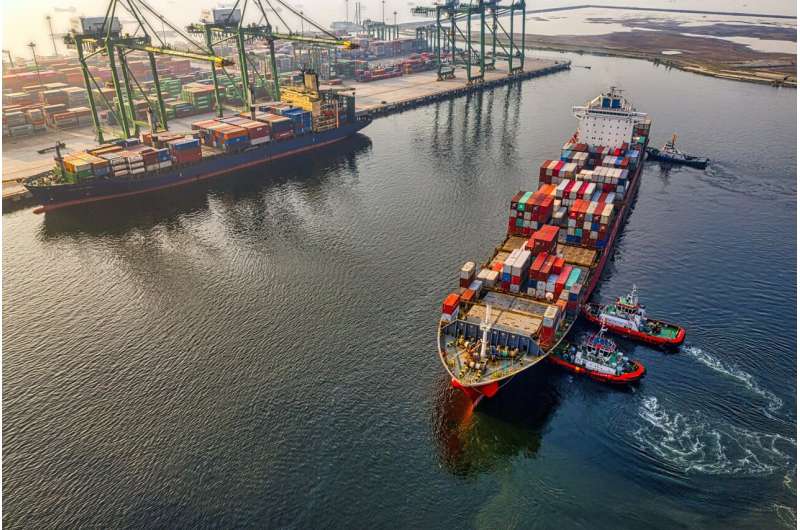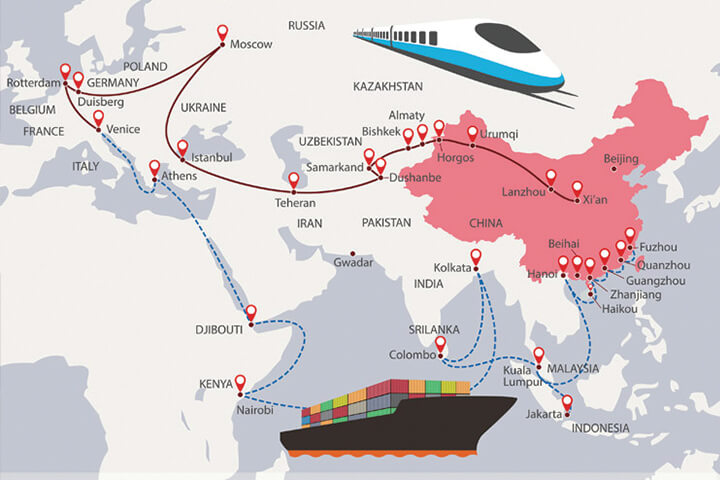What impact will the US presidential election result have on global supply chains?

During his pre-election campaigning, President-elect Donald Trump made a range of pledges with potentially far-reaching consequences for both the United States and the rest of the world. These promises include cuts to climate change regulations, the deportation of unregulated immigrants, and putting an end to conflicts in Ukraine and the Middle East.
Also among Mr. Trump’s intentions is to impose significant trade tariffs on overseas exports—most notably from China and Mexico.
Dr. Florian Lücker, reader in supply chain management at Bayes Business School, said firms were more equipped to deal with supply issues than demand ones such tariffs could create.
“The incoming President has suggested new tariffs on exports into the United States may be imposed. This creates an additional source of uncertainty for firms that heavily export into the U.S.,” he said.
“If additional tariffs came into force, they may dampen demand for goods produced in the U.K. and sold in the U.S., creating headaches for supply chain managers.
“In the past, firms have learned how to manage supply disruptions. Because of supply disruptions such as COVID or the Suez Canal blockage, firms have developed strategies to mitigate risks. These strategies are based on having the right balance between local and offshore suppliers, having redundant suppliers and keeping inventory buffers for slow-moving items. However, the new risk is now different because the demand side is affected.”
ManMohan S. Sodhi, Professor of Operations and Supply Chain Management, Bayes Business School, said Trump’s ambitions to impose tariffs could clash with other pre-election pledges—including the deportation of immigrants.
“If the Trump administration imposes tariffs, the cost of many household goods will increase in the short run, and inflation will rise,” Professor Sodhi said.
“In the medium term, when domestic companies—or overseas ones with factories in the U.S.—increase production to meet the growing demand, they require additional labor. However, U.S. unemployment was only 4% in October 2024, so it is unlikely that domestic manufacturing will produce extra goods unless more workers—legal or illegal immigrants—are found. In this sense, mass deportations will not help.
“Trade deficits will also figure prominently under ‘Trump 2.0.’ The most significant trade deficits the U.S. had in 2023 were with China ($279 billion) and the European Union (EU) ($203 billion), although the deficit with China may be about to increase with Chinese companies transferring goods with supply chains going through Mexico ($152 billion) and Vietnam ($105 billion).
“Based on the previous Trump administration, NATO countries within the EU will have to spend more of their GDP on defense as well. The election result appears to have yielded a rise in European defense company stocks as investors expect these firms’ revenues to grow. However, the new administration may require other NATO countries to buy more from U.S. companies to reduce the deficit.”
Both Dr. Lücker and Professor Sodhi agree that the United States’ stance on trade tariffs will increase the need and likelihood of its main exporters to look elsewhere.
“With U.S. demand being curtailed, both China and the EU will need to look at other countries and each other,” Professor Sodhi continued.
“In the EU, Germany’s auto sector is now on the wrong side on both its demand and supply sides. The U.S. is likely to impose tariffs on the demand side for German cars and the EU on supplies from China, so German carmakers will have to start looking at other countries.
“In general, the EU and China will have to focus more on BRICS countries for developing import and export trade relationships, if they do not wish to see their economies decline.”
“Tariffs may result in sudden demand declines for selected goods,” Dr. Lücker added.
“For supply chains to thrive, firms need to build agility as well as flexibility—even if it comes at additional cost. This flexibility allows them to not only handle supply disruptions but also sudden changes in demand. Some organizations may also want to diversify and reduce dependency on the U.S. market.
“Firms might also find more value in nearshoring as offshoring is often associated with long lead times. These long lead times often result in significant over-production if demand suddenly declines.”
Provided by City University London
Previous Post Next Post





